On the Relations of the Philippines with US and Chinese Imperialism
This paper was presented by Prof. Jose Maria Sison to a webinar on the toxic character of US-Philippine relations as well China-Philippine relations, as well as the dangers and opportunities of inter-imperialist contradictions for the Philippine struggle for full national freedom. The webinar, entitled “Exposing Toxic Relationship: Signs Imperialist US is an Abusive Partner”, was conducted on 4 July 2020 and hosted by the national office and University of Santo Tomas chapter of the League of Filipino Students. The video version is available at this YouTube link.
ON THE RELATIONS OF THE PHILIPPINES WITH US AND CHINESE IMPERIALISM
Contribution by Prof. Jose Maria Sison
To the webinar titled “Exposing Toxic Relationship: Signs Imperialist US is an Abusive Partner”
hosted by the League of Filipino Students – National and University of Santo Tomas Chapter
4 July 2020
Dear Fellow Activists,
I thank the League of Filipino Students – National and its University of Santo Tomas chapter for inviting me to participate in this webinar, titled “Exposing Toxic Relationship: Signs Imperialist US is an Abusive Partner” and to discuss the topic, Of Love Triangles and External Affairs: PH Caught Between US and China.
Let me discuss the relations of the Philippines with US imperialism and then with Chinese imperialism. In the concluding part of my presentation, I shall consider the sharpening inter-imperialist contradictions between the US and China and look at the dangers and opportunities that arise from these contradictions.
1. Relations between the Philippines and US imperialism
US imperialism has the monstrous record of successfully waging a war of conquest against the Philippine republic and the Filipino people from 1899 onwards. In the process, it killed at least 1.5 million Filipinos. As a result, it has been able to dominate the Philippines in an all-round way economically, politically, militarily and culturally in violation of national sovereignty and democratic rights of the Filipino people. I agree with you that the relationship between US imperialism and the Philippines is toxic.
With the exception of the Japanese Occupation during World War II from 1942 to 1945, the US was able to impose its colonial rule on the Filipino people from 1902 to 1946 and then granted a bogus kind of independence to the Philippines on July 4, 1946; and thereby shifted from colonial to semicolonial or neocolonial rule over the Philippines, with the Filipino puppet politicians allowed to run all levels of the counterrevolutionary state of the local exploiting classes of big compradors and landlords.
This false kind of independence was preconditioned by the US-RP Treaty of General Relations in 1946, which retained the US military bases on Philippine territory, the property rights of US corporations and US control of foreign trade and diplomatic relations. To this day, the US has been able to dominate the Philippines by using a series of treaties, agreements and arrangements to bind the country and the people against their own sovereign rights and interests.
For this purpose, the US has been able to use the collaboration of the comprador big bourgeoisie, the landlord class and the bureaucrat capitalists. To adjust the Philippines to the requirements of foreign monopoly capitalism, the US has brought about a semifeudal economy run by the city-based comprador big bourgeoisie and the rural-based landlord class and by training political puppets mainly from these exploiting classes and the middle social strata to do the bidding of the US and become bureaucrat capitalists.
After using such legal devices as the Parity Amendment in the 1935 Constitution, the Bell Trade Act of 1946, the Quirino-Foster Agreement of 1950 and the Laurel-Langley Agreement of 1955 to ensure US economic dominance over the Philippines, the US has taken cover under multilateral foreign investment laws and treaties and all kinds of economic, trade and financial agreements under the auspices of the IMF, World Bank, World Trade Organization and the Asian Development Bank.
To this day, the US remains the No. 1 foreign investor in the Philippines and the No. 1 largest export market. It also accounts for 43 per cent of hot money inflow. US corporations are dominant, with the assistance of the comprador big bourgeoisie of Spanish, Chinese and Filipino ancestry which acts as the chief trading and financial agents in a semifeudal economy characterized by the exchange of raw materials and some semimanufactures from the Philippines and capital goods and consumer goods from abroad. Japan is the No. 2 largest foreign investor in the Philippines but is the No. 1 provider of so-called official development assistance (ODA). Yet the largest part of this ODA is tied aid and spent on Japanese materials, equipment and contractors.
China, even including Hong Kong, is only the distant No. 3 largest foreign investor in the country in relation to the US and Japan. It has become the No. 1 trading partner of the Philippines, especially since 2013. It steadily came to this position after it started to dump cheap Chinese consumer goods and after it became the global manufacturing base for semiconductors and other products after the Asian financial crisis of 1997. Most imports from China are not even Chinese but from US, Japanese and other foreign transnational corporations located there to take advantage of its cheap labor. China also enjoys certain advantages in trading due to the collaboration of Chinese and Filipino-Chinese big compradors.
The US-RP Military Bases Agreement of 1947 was not renewed in 1991 as a result of the demand of the broad masses of the Filipino people who were indignant over the fact that the Marcos fascist dictatorship had used economic and military relations with the US in order to maintain autocratic rule. But the US-RP Mutual Defense Treaty of 1951 has continued to bind the Philippines and its military forces to the aggressive policies of US imperialism. The US-RP Military Assistance Agreement of 1947 has also persisted to allow the US to control the security policy, military planning, indoctrination of military officers, intelligence exchange and armaments of the counterrevolutionary semicolonial state.
Soon enough the US imperialists were able to obtain the series of military agreements to authorize and facilitate the deployment US forces and de facto military bases. The agreements include the Visiting Forces Agreement (VFA, 1999), Mutual Logistics Support Agreement (the latest MLSA, 2002), the Enhanced Defense Cooperation Agreement (EDCA, 2014) and so many operational and supply agreements. US imperialism is the biggest terrorist in the entire history of mankind, responsible for the mass killing of 25 to 30 million people since after World War II. Especially after September 11, 2001, it has used the term “terrorism” as a pejorative expression against the anti-imperialist and democratic forces and as pretext for unleashing wars of aggression and staging false flag operations by CIA-trained mercenaries posing as Islamic jihadists.
Quite recently on January 11 the Duterte regime made the threat to abrogate the VFA to create the impression that he was favoring China, drawing away from the US and forging an independent foreign policy. It did not take long before Duterte exposed his incorrigible puppetry to US imperialism and his shallow deceptive character by backing out of his false threat after just a few months on June 2. All the while other military agreements aside from the VFA have remained valid and in effect and the regime has continued to receive US military assistance and collaborate with US military forces under Operation Pacific Eagle-Philippines.
Since the moment he set out to take the presidency, Duterte has always been surrounded by bureaucrats and generals who are rabid agents of US imperialism. As president, he has done nothing to undo the all-round US dominance over the Philippines. In fact, he has promised Trump to terminate the peace negotiations with the NDFP, wipe out the revolutionary movement of the people by all means and deliver charter change allowing US corporations the unlimited right to own Philippine land, exploit natural resources and operate public utilities and all kinds of businesses.
Thus, Trump has practically given Duterte the license to form a civilian-military junta called the National Task Force-ELCAC [for “Ending the Local Communist Armed Conflict” — PRISM Eds.] to further militarize his regime, escalate state terrorism in the name of anti-communism and prepare the ground for a full-scale fascist dictatorship. He has already used the COVID-19 pandemic to form the Inter-Agency Task Force to carry out the lockdowns as dress rehearsal for military and police control of population and resources under a projected fascist dictatorship and to railroad a bill of state terrorism that negates democratic rights and makes superfluous the declaration of martial law.
The US does not just use economic and military means to dominate the Philippines. It has also used cultural, educational and other propaganda means to dominate the Philippines. To combat the demand of the youth and the national democratic movement for a national, scientific and mass cultural and educational system, the US uses various ways to control the educational and cultural policy of the Philippine reactionary state and thus perpetuate their influence over the politicians, bureaucracy and professionals and, in effect, among the masses.
As university activists, you are aware of how the US uses its own official agencies and multilateral agencies, private philanthropic foundations, business corporations, the mass media, social media, publications and films and certain subjects and textbooks in the curricula to propagate colonial mentality and influence the thinking of faculty members and students, the entire intelligentsia and broad masses of the people to follow the US imperialist line on historic and current issues.
2. Relations of the Philippines with China
The Philippines established diplomatic and trade relations with the People’s Republic of China in 1975. The Marcos fascist dictatorship felt confident to establish such relations because the US and China had been on a path of rapprochement since the Nixon visit to China in 1972. It became easier for Sino-Philippine relations to develop after the Dengist coup in 1976 and China’s adoption of capitalist reforms and opening up for integration in the world capitalist system in 1978.
The US established diplomatic relations with China in 1979 and proceeded to concede to it low-tech consumer manufacturing for export to the US by way of weaning China from socialism while continuing to press for more capitalist reforms in favor of foreign monopoly firms. The course of capitalist development in China was increasingly characterized by rampant corruption and inflation, which ultimately resulted in massive protests and their violent suppression in Beijing and many other Chinese cities in 1989.
In the aftermath of such mass protests, the Deng ruling clique begged for more economic, trade and technological concessions from the US and promised to adopt further capitalist reforms, especially the reduction of state-owned enterprises, increase of joint private-state sector enterprises and further loosening of the foreign investment law. The US played hard to please but made enough concessions in investments and technology transfer to help China stabilize its economy in its rapid conversion to capitalism, advance significantly from cheap consumer manufacturing and register high growth rates.
The rapid growth rate of China, especially its expanding production of cheap consumer goods for export to the US market, had an adverse impact on the so-called tiger economies of East Asia and triggered the Asian financial crisis of 1997. When this crisis occurred, China further expanded its production of cheap consumer goods and became the final platform for assembling semimanufactures from the Philippines and other Southeast Asian countries.
The US was pleased to have China as its main partner in carrying out the imperialist policy of neoliberal globalization and to have China’s high growth rate cushion the falling global growth rate. During the financial crash of 2008 and consequent Great Recession until recently, China was celebrated as the ever-rising star of the world capitalist economy. It has raised its own level of scientific and technological development, with the help of technology transfer from the US and elsewhere through foreign direct investments, direct purchases of dual-purpose equipment and academic exchanges in science and technology.
By the time China joined the WTO in 2001, the US under Bush junior was pleased with the apparent extent of liberalization of the Chinese economy and the surges of foreign investments there. The Bush regime preoccupied itself with drumming up its so-called war on terror after 9-11, with unleashing wars of aggression in Iraq and elsewhere and with trying in vain to buoy up the US economy through “military Keynesianism”, making more and bigger purchase orders from the military-industrial complex.
Obama played the house boy loyal to the interests of US imperialism and continued to pursue wars of aggression. But it was during his regime that US strategy planners began to pay attention to the gravity of the US economic crisis as well as the world capitalist system in the wake of the financial crash of 2008, the high cost of overseas military bases and the wars of aggression away from the Asia-Pacific region and the galloping growth of the public debt burden.
The Obama regime noticed the economic and military rise of China and its growing geopolitical potential and ambitions. Thus, by 2012 it called for a strategic pivot to East Asia and stronger economic and security cooperation among the US, Japan and Australia to hold the line in the Pacific. The US was facing up to the challenge of China as it harped on owning 90 per cent of the South China Sea and demanding the return of the Daoyu islands from Japan. It was also around this time that China started to tout its Belt and Road Initiative to reverse Western dominance in maritime trade since the 16th century while consolidating its growing ties with countries across a vast swath of the Asian mainland reminiscent of the ancient Silk Road.
China began to build artificial islands in the exclusive economic zone of the Philippines in the West Philippine Sea and claim even the Panatag Shoal (Scarborough Shoal) in violation of Philippine sovereign rights and the UN Convention on the Law of the Sea. The Philippines was therefore compelled to file a case against China before the Permanent Court of Arbitration on January 22, 2013. It won the case on June 12, 2016.
But the incoming Duterte regime declared that it would lay aside the judgment. He expected his ruling clique to benefit from Chinese loans for infrastructure projects as well as from lucrative connections with Chinese big compradors on both sides of the South China Sea and with criminal syndicates in drug smuggling and casino operations. The Duterte ruling family and its cronies are known to have been stashing away their ill-gotten wealth in China. They are thus tied to China and have to play an ambiguous role whenever issues arise publicly against Chinese policies and actions detrimental to the Philippines.
Under the Duterte regime, China has been able to build and militarize seven artificial islands in the Philippine EEZ in the West Philippine Sea. It has brought Philippine soil from Zambales and northeastern Mindanao in connection with the frequent smuggling out of mineral ores for China and likewise to serve as landfill for its artificial islands. It has also consolidated its control over the national power grid and built cell towers of China Telecom inside AFP military camps in contradiction with EDCA even as China has not delivered on most of its promises of loans for infrastructure projects. But it would be even worse if it fulfilled these promises because the loans carry high interest and require overpriced Chinese contractors, labor and supplies.
In the meantime, the Philippines under the Duterte regime has isolated itself from nearly all other members of the ASEAN, especially Vietnam, Indonesia and Malaysia, in standing up against the aggressive claims and acts of China in their respective EEZs and extended continental shelves. The Duterte regime also runs counter to the position of the US that China must not claim ownership over the high seas, violate the freedom of navigation and take any aggressive action against the ASEAN states.
The position of the Trump regime on China’s unlawful claims over the whole of the South China Sea and on keeping free and open the Indo-Pacific maritime route is related to a whole framework of protectionist and punitive measures against China for using state planning and the still dominant state-owned enterprises (supposedly only 3 per cent of Chinese corporations but in fact in control of the most strategic 30 per cent of the Chinese economy) to achieve strategic economic and military goals. The US has vigorously accused China of using state power to manipulate its economic, trade and financial policies in violation of global market rules and stealing technology from the US and becoming the chief economic competitor and political rival of the US.
3. Dangers and Opportunities from the Inter-Imperialist Contradictions
From time to time, there are naval and air military shows of strength in the South China Sea by China and by the US independently or together with allies. Sometimes, there are expressions of fear by political analysts that war might break out. Frequently, the tyrant Duterte practically gives China the license to occupy the maritime features of the West Philippine Sea by gratuitously saying that he cannot do anything to stop China because he does not have the capability to wage war against China which would wipe out his troops in case of any armed conflict.
There is no immediate danger of direct all-out war breaking out between the US and China because the latter is obsessed with gaining more time for its “peaceful economic rise” and because each of these two imperialist powers has enough nuclear weapons to destroy the other. There is a balance of terror between them, resulting in mutual deterrence. The two imperialist powers are still subject to certain decision-making processes domestically. And under current circumstances in the world, the people have the high potential to counter and defeat a government that is poised to launch a nuclear war and cause a catastrophe of global scope.
For some years to come, the crisis of the world capitalist system, including inter-imperialist rivalries, will worsen but the imperialist powers will avoid a direct war between any of them. As much as possible, they would rather shift the burden of crisis to the underdeveloped countries and launch wars of aggression against them or mire them in regional and local proxy wars. That has been the case for 75 years already since after the end of World II. The nuclear stalemate arose during the Cold War when the Soviet Union developed its own nuclear weapons and delivery system.
Major economists and international institutions, including the IMF, World Bank and OECD, have come to the conclusion that the global economy is now afflicted by a crisis far worse than the still unsolved Great Recession that began in 2008 and even worse than the Great Depression of the 1930s that generated the inter-imperialist contradictions leading to World War II. COVID-19 has aggravated the crisis but the root cause is the ever worsening crisis of overproduction, the bankruptcy of the imperialist policy of neoliberal globalization and the sharpening struggle for a redivision of the world among the imperialist powers.
The inter-imperialist contradictions between the US and China and their respective alliances with other imperialist powers will escalate and will expose the weaknesses of both sides. At the same time, the anti-imperialist and democratic struggles of the proletariat and peoples of the world will intensify and generate the conditions favorable for the resurgence of the world proletarian revolution.
The strategic decline of the US will continue. Meanwhile, the efforts of the US to contain and cut down the economic and military rise of China will have adverse effects on both China and the US. The trade war between the two imperialist powers does not solve but aggravates the crisis of overproduction and sharpens the struggle for a redivision of the world among the imperialist powers. For some more years to come, the imperialist powers can still find ways of cutting down each other through calibrated adversarial means, including covert cyber or biotech operations and regime-change strategies but short of a direct all-out conventional or nuclear war.
The inter-imperialist contradictions generate dangers and opportunities. Under current circumstances, the worst kind of danger for a country like the Philippines is to become a complete captive and pawn of any imperialist power, whether the US or China, or to become a confused victim of these two imperialist powers. But on the contrary, the Philippines under a patriotic leadership can take advantage of the opportunities generated by the inter-imperialist contradictions and avail of the ASEAN to counter the most outrageous impositions of any imperialist power.
With regard to problems posed by China’s claim of ownership of nearly all of the South China Sea, the ASEAN countries can agree with nearly all countries of the world that the right of free navigation in the high seas must be respected and be so exercised by countries critical of China’s expansionist ambitions as to help prevent China from violating said right and from crossing over from its own EEZ and ECS to take over those that belong to the Philippines and other ASEAN states.
In the face of the traitorous character of the Duterte regime, the Filipino people and their patriotic and progressive forces must do everything in their power to oust it as soon as possible and intensify the demand for China to respect the 2016 judgment of the Permanent Court of Arbitration in favor of the Philippines in accordance with the UN Convention on the Law of the Sea, as well as encourage the other ASEAN countries to assert their own sovereign and maritime rights against the expansionist policy and actions of China and avail of the legal precedent set by the 2016 judgment of the Permanent Arbitration Court in favor of the Philippines. The ASEAN countries can take all possible legal and political initiatives to invoke said judgment as precedent and discourage China from violating their rights.
The Philippines and other ASEAN countries can present their respective complaints against China and demand compensation for damages before the appropriate agencies of the UN and file cases in the appropriate courts that can make the assets of China in certain countries answerable for Chinese obligations and liabilities. The point is to require China to withdraw from the artificial islands it has built, militarized and occupied in the West Philippine Sea and to pay for the damages that it has done to the marine environment in the same manner as the US was previously compelled to pay USD 2 million for the damage done to Tubbataha Reef by the US warship USS Guardian.
The Duterte regime has played up fear of China’s military might in making the Philippines desist from exploring and exploiting the hydrocarbon (oil and gas) resources in its own exclusive economic zone. And the traitor, coward and crook Duterte has even gone so far as to offer to China joint ownership of the resources under the guise of joint exploration and exploitation of said resources. He is in fact giving away to China full control of the technology, personnel, the accounting of costs and production and the siphoning of the resources to China.
The utter stupidity of the tyrant Duterte is best demonstrated by his obfuscation of the fact that the Philippines can get the best possible technology and the best possible terms from one of the three companies (Norway’s Equinor, previously known as Statoil, Royal Dutch Shell and the US Chevron) that are acknowledged as the best in undersea exploration and exploitation of oil and gas resources. If for instance, the Philippines can get the best possible terms from the Norwegian oil company, China will not dare to make war on the investments of a company belonging to a NATO member-state.
The Duterte regime has utterly failed to assert the sovereign rights of the Philippines over its own exclusive economic zone. The marine resources there have an estimated value of USD 1.5 trillion and the oil and gas resources an estimated value of at least USD 26 trillion. These are more than enough to industrialize the underdeveloped Philippine economy, engage the revolutionary forces of the people in a just peace agreement, overcome imperialist dominance and bring about a higher quality of life for the Filipino people. Instead, the regime has bowed to the aggressive claims of China and has reduced the Philippines to begging for loans at the most onerous terms for infrastructure projects that are overpriced and undertaken by Chinese companies and their own Chinese employees.
Yet the Duterte regime has the temerity to occasionally claim that its subservience to China is veering away from the US and developing an independent foreign policy. There can be no bigger lie. The regime has a two-faced character. It has not done anything to cut down the all-round dominance of the US over the Philippines. It has backed out of its false threat to abrogate the VFA and it is still hell-bent on fulfilling Duterte’s 2017 promise to Trump to wipe out the revolutionary movement of the Filipino people and change the constitution to allow US and other foreign corporation to own up to 100 per cent of land, natural resources, public utilities and other business enterprises in the Philippines.
The Duterte regime cannot be trusted to act in the interest of the Philippines and the Filipino people. In fact, it is the fervent desire of the Filipino people to oust this traitorous, tyrannical, murderous and corrupt regime and obtain justice against its so many grievous crimes. The rights of the Filipino people can best be protected by a government that arises from the revolutionary struggle for national and social liberation against imperialist domination and the local exploiting classes of big compradors, landlords and bureaucrat capitalists. ###
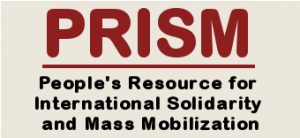
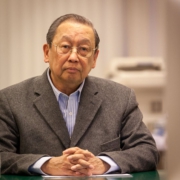

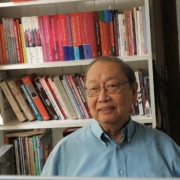

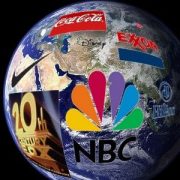
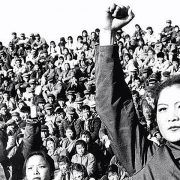
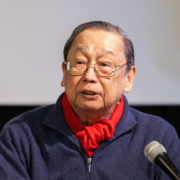


Leave a Reply
Want to join the discussion?Feel free to contribute!